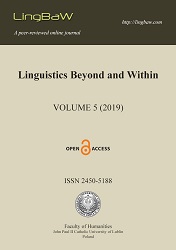Recalculating: The atlas of pragmatic parameters of developmental disorders
Recalculating: The atlas of pragmatic parameters of developmental disorders
Author(s): Anita Viszket, Alexandra Hoss, Eszter Kárpáti, Gábor AlbertiSubject(s): Semantics, Pragmatics, Psycholinguistics, Theory of Communication
Published by: Wydawnictwo KUL
Keywords: BDI; pragmatics; developmental disorders; HFA; ToM;
Summary/Abstract: The paper demonstrates how pragmatic features of certain developmental disorders, including Autism Spectrum Disorder, can be described in a formal pragmasemantic framework. We apply ℜeALIS, the pragmasemantic system (Alberti, Kleiber, Schnell, & Szabó 2016) which offers a formal representation for linguistically encoded speech acts and for the beliefs, desires and intentions that are present in the minds of potential interlocutors. It defines worldlets which include the BDI states of the speaker, as well as BDI states that the speaker assumes the hearer has, in an unlimited recursive pattern. The model is built upon the idea that the worldlets are organized in a system of multi-level tree-structures and are easily processable and accessible in communication for the intact human mind. In this formally defined system, the intensity of the different BDIs (e.g. strong/weak belief) belonging to the worldlets must be signaled by the interlocutors, using pragmatic tools. We found that pragmatic inaccuracy is detectable in ℜeALIS when it is related to inappropriate presentation of BDIs (e.g. inability to identify the illocutionary goals), poor reciprocity (e.g. ToM1 and ToM2 problems), impairment of coding/decoding (e.g. incorrect semantical and syntactical coding of the information structure) and insensitivity to intensity (e.g. the misuse of discourse markers). These symptoms can be present in any of the aforementioned disorders. Our “atlas” can illustrate that the so-called “pragmatic deficit” has a formally definable structure.
Journal: Linguistics Beyond and Within (LingBaW)
- Issue Year: 5/2019
- Issue No: 5
- Page Range: 148-160
- Page Count: 13
- Language: English

